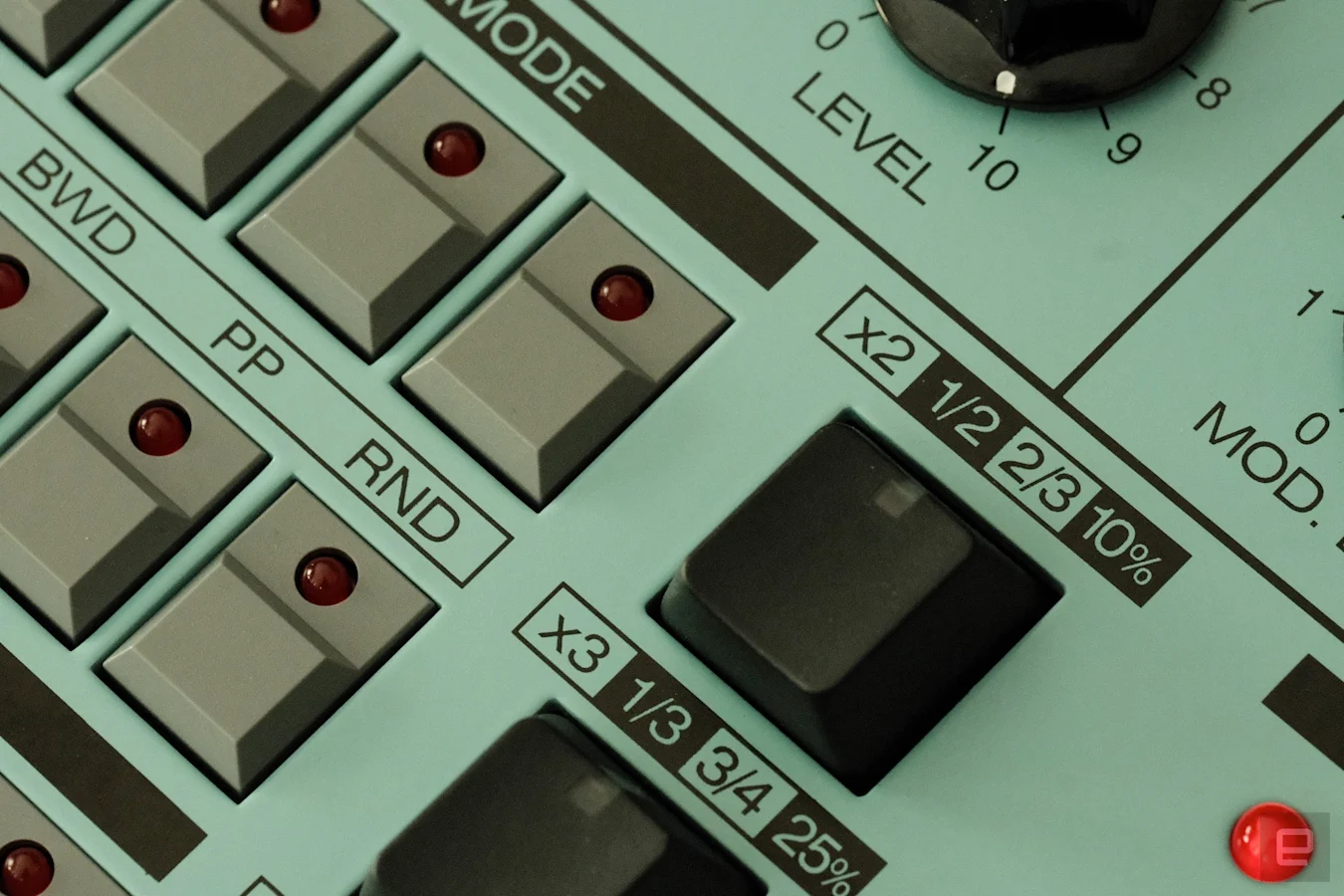Image Credit: Terrence O’Brien / Engadget
In fact, after years of mostly making more laidback and ambient styles of electronic music, I found myself dialing in harsh, blown-out guitar tones, a la Nine Inch Nails Broken to jam along with Pērkons. I was transported back to my high school days of black t-shirts and long greasy hair. And I wasn’t mad about it.
The one tip I have is, keep that drive knob pinned and be generous with the compressor. I think part of why I was a bit lukewarm on it at first was because I was trying to be subtle and judicious with dialing in those effects. Which, frankly, it was probably pretty stupid of me to expect subtlety from a drum machine named after the Baltic god of thunder.
Once you accept the sound palette at your disposal, you have to come to grips with the technical functions of Pērkons. This is where things can get a little messy. While programming in a basic 16-step drum pattern and playing it back is relatively simple, some of the more advanced functions aren’t always that intuitive. At least at first, I’d highly recommend keeping the manual handy. Even if just to reference what the parameter knobs are controlling for each voice mode.
Terrence O’Brien / Engadget
The Pērkons is decidedly old school in its approach to interface design. There’s no screen or menu to dive through. Instead, almost all of the machine’s functions from the sequencer playback mode, to the shuffle percentage to the LFO target, are controlled via the 64 step buttons or four trigger buttons. This means that basically anything beyond simply inputting individual drum hits requires pressing some combination of two or three buttons simultaneously.
For example, if you want to set the probability that a particular step will play you have to hold down the step you want to change, the probability key and one of the four trigger buttons to select a percentage (10, 25, 50 or 90 percent). The benefit is that, since you don’t have to do any menu diving, it’s simple to manipulate a pattern while it’s playing. And once you figure out the basics of how the interface works, it’s pretty easy to grasp since everything is labeled. The downside is that some things have relatively limited options, like probability. If you want to have a step to have a 33 or 75 percent chance of playing, you’re out of luck. Similarly, shuffle is in predetermined percentages, though those aren’t labeled.

Terrence O’Brien / Engadget
You also have to be careful to hit the buttons you want in the right order. If you press the pattern / ratchet button before you start holding down a particular step, then you’re not going to add a ratchet, you’re going to change patterns. And if you haven’t saved the one you were currently working on, it will be gone for good. Pērkons can be fun, but it can also be very unforgiving.
Even though the interface is old school, Pērkons does have a number of new-school features to help keep it from being too robotic. In addition to shuffle and probability, you can change the length, add accents, multiply or divide the tempo, select one of four “grooves” and choose one of four different playback modes: forward, backward, ping-pong or random. And each of these can be done on a per-track basis. So you can make track four only 13 steps long and ping-pong from beginning to end and back at half speed, while track one plays at double speed with a 50-percent shuffle and track two has a unique groove but is only eight steps long .
